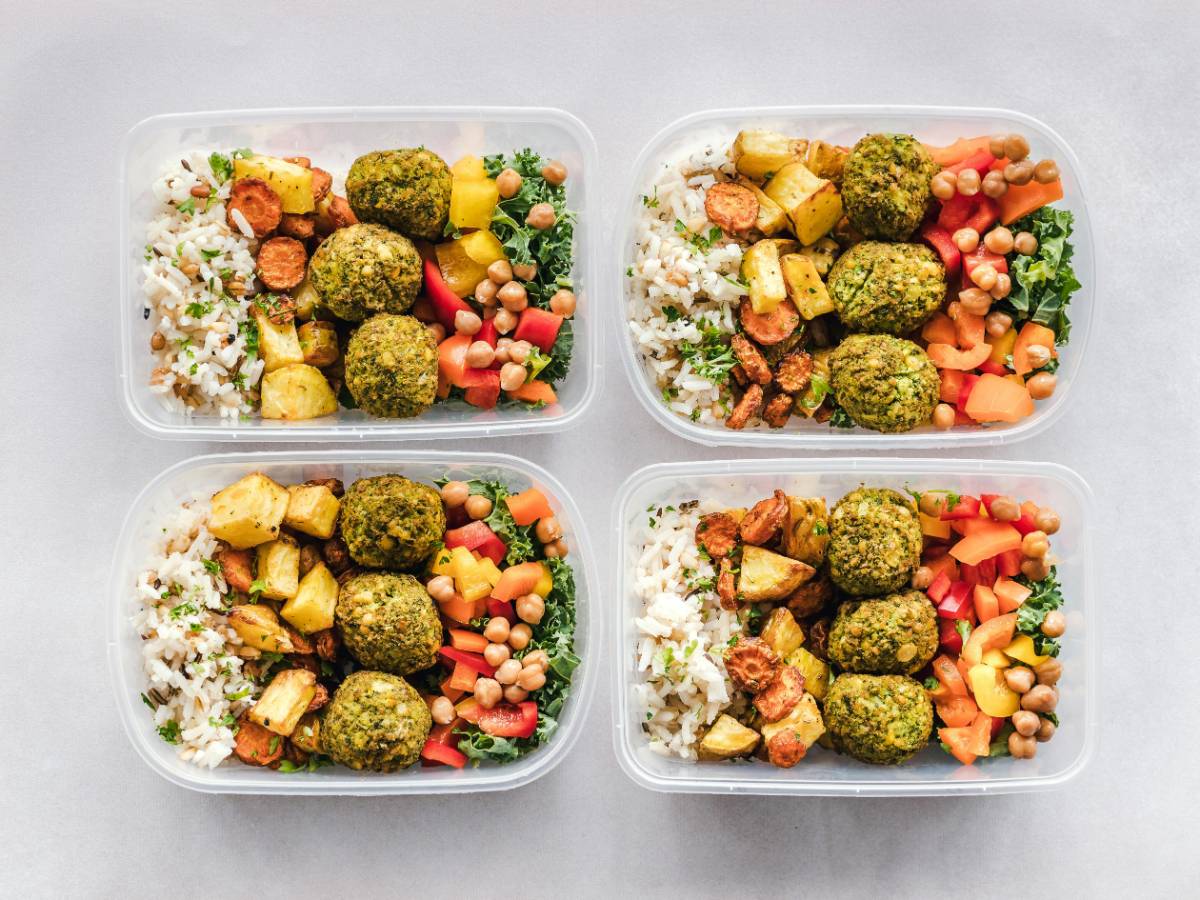How to Choose Healthy Cooking Oils

3 min read
|27 Feb 2025Choosing the right cooking oil is crucial for maintaining a healthy diet and enhancing the flavor of your meals. With so many options available, it can be challenging to determine which oils are best suited for your cooking needs. This article will guide you through the different types of cooking oils, their health benefits, and how to choose the healthiest options for your kitchen.
Understanding the Types of Cooking Oils
Cooking oils come in various types, each with its own unique properties and health benefits. The most common types of cooking oils include:
Olive Oil: Known for its heart-healthy benefits, olive oil is rich in monounsaturated fats and antioxidants. It's ideal for salad dressings, sautéing, and low-heat cooking.
Coconut Oil: Coconut oil is high in saturated fats, particularly medium-chain triglycerides (MCTs), which can provide quick energy. It has a high smoke point, making it suitable for baking and frying.
Avocado Oil: Avocado oil is another excellent source of monounsaturated fats. It has a high smoke point, making it versatile for high-heat cooking, grilling, and frying.
Canola Oil: Canola oil is low in saturated fat and high in omega-3 fatty acids. It's a budget-friendly option for baking, frying, and roasting.
Sunflower Oil: Sunflower oil is high in vitamin E and has a mild flavor, making it suitable for a variety of dishes, from frying to baking.
Peanut Oil: Peanut oil is often used in Asian cuisine and has a high smoke point, making it ideal for stir-frying and deep-frying.

Health Considerations When Choosing Cooking Oils
When selecting a cooking oil, it's essential to consider its health benefits and how it fits into your overall diet. Here are some key factors to keep in mind:
Fat Content: Cooking oils contain different types of fats, including saturated, monounsaturated, and polyunsaturated fats. Generally, oils high in monounsaturated and polyunsaturated fats are considered healthier for the heart.
Smoke Point: The smoke point of an oil is the temperature at which it begins to break down and produce harmful compounds. Choose oils with a high smoke point for high-heat cooking methods like frying and sautéing.
Nutrient Profile: Some oils, such as olive oil and avocado oil, contain additional nutrients like vitamin E and antioxidants. These oils offer added health benefits beyond just their fat content.
Flavor: The flavor of the oil can significantly impact the taste of your dish. Choose oils with flavors that complement the ingredients you're using.
The Healthiest Cooking Oils to Use
While there are many cooking oils available, some are healthier than others. Here are some of the best options to include in your cooking:
Extra Virgin Olive Oil: Extra virgin olive oil (EVOO) is considered one of the healthiest oils due to its high content of monounsaturated fats and antioxidants. It’s perfect for drizzling over salads, dipping bread, and cooking at low to medium heat.
Avocado Oil: Avocado oil is rich in heart-healthy monounsaturated fats and has a high smoke point, making it suitable for both high-heat cooking and salad dressings.
Coconut Oil: While coconut oil is high in saturated fats, its unique composition of MCTs can offer some health benefits, particularly for those on a ketogenic diet. Use it in moderation for baking or medium-heat cooking.
Canola Oil: Canola oil is a good all-purpose oil with a mild flavor. It’s low in saturated fat and contains omega-3 fatty acids, making it a healthier option for everyday cooking.
Walnut Oil: Walnut oil is rich in omega-3 fatty acids and has a distinct, nutty flavor. It’s best used for salad dressings, drizzling over vegetables, or adding to baked goods.
Flaxseed Oil: Flaxseed oil is an excellent source of omega-3 fatty acids, but it has a low smoke point, making it unsuitable for cooking. Use it in cold dishes like salads or smoothies.
Cooking Oil Tips and Best Practices
To get the most out of your cooking oils, follow these tips and best practices:
Store Oils Properly: Keep your cooking oils in a cool, dark place to prevent them from going rancid. Some oils, like flaxseed oil, are best stored in the refrigerator.
Use Oils in Moderation: Even healthy oils are calorie-dense, so use them in moderation to avoid excess calorie intake.
Rotate Your Oils: Different oils offer different health benefits, so it's a good idea to rotate between them based on your cooking needs and flavor preferences.
Watch Out for Hydrogenated Oils: Avoid oils that contain hydrogenated or partially hydrogenated fats, as these can increase the risk of heart disease.
Conclusion
Choosing healthy cooking oils is an important part of maintaining a balanced diet. By understanding the different types of oils, their health benefits, and how to use them effectively, you can make informed choices that enhance the flavor of your dishes while supporting your overall health. Whether you prefer the robust flavor of extra virgin olive oil or the versatility of avocado oil, there’s a healthy cooking oil to suit every culinary need.
MORE ARTICLES

3 min read | 07 Apr 2025
How Personal Care Routines Can Impact Your Weight Loss Journey
Personal care routines play a crucial role in supporting and enhancing your weight loss journey. While diet and exercise are commonly recognized as the primary factors in weight management, personal care practices can significantly impact your overall health and success in achieving your weight loss goals. Here’s how incorporating personal care routines into your lifestyle can positively affect your weight loss efforts.

2 min read | 15 Apr 2025
Effective Strategies for Weight Loss Through Diet and Exercise
Weight loss is a multifaceted journey that combines both dietary changes and exercise. To achieve lasting results, it’s important to integrate effective strategies from both areas into a cohesive plan. This guide outlines key strategies for successful weight loss through diet and exercise, focusing on creating a balanced approach that supports long-term success.

5 min read | 14 Apr 2025
Creating a Holistic Approach: Combining Nutrition, Exercise, and Personal Care
A holistic approach to health involves integrating multiple aspects of well-being to create a balanced and fulfilling lifestyle. Combining nutrition, exercise, and personal care can significantly enhance your overall health and quality of life. By addressing these key areas, you can achieve a harmonious balance that supports both physical and mental well-being. Here’s how to create a holistic approach by effectively blending these three essential components.

4 min read | 13 Apr 2025
How to Incorporate Healthy Foods into Your Pre- and Post-Workout Meals
Incorporating healthy foods into your pre- and post-workout meals is crucial for optimizing performance, enhancing recovery, and supporting overall fitness goals. The right nutrients can provide energy, improve endurance, and aid in muscle repair. Here’s a guide on how to effectively include healthy foods in your workout meals to maximize their benefits.

3 min read | 12 Apr 2025
The Best Skincare Practices for Active Individuals
For active individuals, maintaining healthy skin can be challenging due to frequent sweat, exposure to the elements, and the physical demands of a rigorous lifestyle. Adopting effective skincare practices is crucial to protect and nourish your skin while staying active. Here are some of the best skincare practices tailored for those who lead an active lifestyle.

2 min read | 11 Apr 2025
Top 10 Healthy Eating Habits for Weight Loss and Fitness
Adopting healthy eating habits is crucial for achieving weight loss and fitness goals. A well-balanced diet not only supports weight management but also enhances overall health and performance. Here are the top 10 healthy eating habits to help you stay on track with your weight loss and fitness journey.
RECENT POSTS
1
Overcoming Food Cravings: Tips and Tricks
4 min read | 15 Feb 20252
How to Maintain Weight Loss After Reaching Your Goal
3 min read | 14 Feb 20253
Setting Realistic Weight Loss Goals
3 min read | 13 Feb 20254
Dealing with Weight Loss Plateaus
5 min read | 12 Feb 20255
The Role of Social Support in Achieving Weight Loss Goals
2 min read | 11 Feb 20256
How to Create a Balanced Daily Routine
3 min read | 10 Feb 2025MORE POSTS

How to Balance Salt and Flavor in Your Meals
3 min read | 19 Mar 2025
The Impact of Salt on Blood Pressure
4 min read | 18 Mar 2025
Tips for Eating Out While Watching Your Sodium Intake
3 min read | 17 Mar 2025
Low-Sodium Alternatives and Substitutes
5 min read | 16 Mar 2025
Understanding the Sodium Content in Processed Foods
3 min read | 15 Mar 2025



